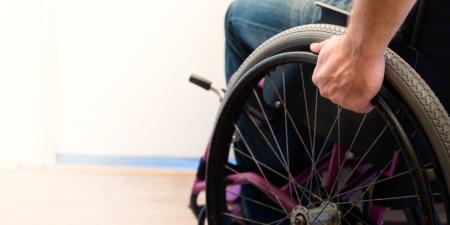
This drawing was provided by a patient for whom the legendary phoenix bird has great significance. Drawing by Mario Monteil Lechuga. Permission for use granted by artist.
A Call for Compassionate, Person-Centered Health Care
Clinicians’ compassion and empathy have been found to be associated with improved clinical outcomes [1, 2]. The Associated Medical Services (AMS) Phoenix Project issued a Call to Caring in 2012 to reemphasize the importance of compassionate, person-centered care in medical practice. AMS Phoenix Project defines person-centered care as “high quality health care that respects an individual’s preferences, needs and values and is provided in an empathic and compassionate way” [3]. This emphasis stands to benefit health care recipients as well as clinicians at each point of care and to contribute to broader health care reform. The Royal College of Physicians and Surgeons of Canada’s CanMEDS Physician Competency Framework identifies person-centered care as an important emphasis of the competencies [4]. Despite agreement that compassion and person-centeredness are important, it appears that these characteristics wane as health professionals move through their training [1, 5, 6].
Educational interventions including personal encounters with patients, modeling by mentors, and reflective activities (especially early in training) can foster caring qualities such as compassion and empathy [6-9]. Additionally, longitudinal experiences for health care learners with marginalized patient groups have promoted positive attitudes toward those underserved populations [9-11]. Experiential learning in clinic- or community-based settings also fosters communication and interpersonal skills that are essential to engage patients from diverse populations in shared decision making [12-15].
Effective two-way communication is foundational to person-centered care [12, 13], particularly when patients have complex needs that may make communication more difficult. There has been a paucity of curricula and standardized guidelines [16] to help trainees make communication adaptations in situations where significant communication barriers exist. Such barriers commonly affect patients with developmental disabilities (DD), who can present with cognitive and communication challenges in addition to complex medical and mental health needs. Health professionals report inadequate training in the care of patients with DD [17, 18].
Person-Centered Care for Patients with Developmental Disabilities
The literature consistently describes the population of people with DD as having more than average medical and mental health comorbidities coupled with more barriers to the kind of individualized care that meets their needs [17, 19]. Although physical barriers to access for persons with disabilities are being addressed in many countries, system-related barriers remain significant with DD being considered beyond the scope of practice for many generic services [19, 20]. More challenging are clinicians’ attitudinal barriers and unconscious biases toward people with disabilities, which are beginning to be addressed in health care training [21, 22]. Common ethical challenges in the care of persons with DD tend to center upon concepts such as human rights, recognition of personhood, dignity, intrinsic worth, and respect for agency in decision making [23]. Furthermore, health care clinicians express feeling inadequately equipped to assess and treat people who present with significant cognitive or communication deficits, identifying a need for more experience and training [17, 18]. Therefore, it is important for health care curricula not only to equip students with relevant knowledge and skills, but also to influence attitudes [21], address unconscious biases [22], and instill respectful, caring competencies. Fortunately, training that incorporates patients with disabilities has been found to improve knowledge, attitudes, comfort, and willingness to provide care [24-27].
Curriculum of Caring: Addressing Barriers to Care
Beginning in 2008, the Niagara Regional Campus of McMaster University’s Michael G. DeGroote School of Medicine provided trainees with experiences to increase their capacity to provide competent and compassionate care to people with DD. A three-phase program, the Curriculum of Caring, has been developed in which people with DD and their caregivers contribute to the education of medical students throughout their three years of medical training. In 2011, the program was extended to include students at Brock University’s Center for Applied Disability Studies and Nursing with the further benefit of interprofessional learning [28]. Video and web-based resources [29] have been also been created in order to expand the reach and application of the Curriculum of Caring [30].
Program Premise: Experience is the Best Teacher
Active inclusion of people with disabilities in medical decision making is recognized as a human right and ethical standard [31]. No longer is medical paternalism accepted in the care for people with DD. Self-advocates are urging health care professionals to gain an appreciation of each person as an individual rather than fixating on disability [32]. Focus groups of adults with DD emphasize the importance of attitudes (genuine respect), skills (especially appropriately adapted communication), and competencies (treating relevant problems) [33]. And health care recipients living with DD are increasingly appreciated as best suited to teach about the care they need and how to deliver it [31-33].
McMaster University’s program development has been shaped by the educational literature, student evaluations, and multiyear contributions of people who have lived experience with DD. The result has been a three-phase progression of experiential learning that incorporates early exposure to people with DD, clinical skills training, and opportunities to practice in interdisciplinary team settings.
Phase one: early exposure. Students participate in an interprofessional half-day at Bethesda, a regional provider of community-based services for children and adults with DD. They interact with “Bethesda Day” hosts from an adult day program and hear from a parent of a child with special needs. These direct interactions are augmented by an overview, led by the author, of DD, resources for further reading [34, 35], and local services, with an interprofessional emphasis. Learners consistently note that hearing personal narratives had the most impact in sensitizing them to the needs of those who live with disabilities and motivating them to acquire more skills and experience.
Phase two: clinical skills training. This phase teaches pre-clerkship students to “Communicate CARE” by communicating “clearly, attentively, responsively, engaging the person first and others as appropriate” in interviews with patients with DD. Communicate CARE emphasizes environmental and interpersonal adaptations that contribute to the comfort and success of interviews. Students are given opportunities to interview volunteer patients with varying cognitive or communication profiles and mental health needs. These interactions are followed by group discussion about the interviewers’ experiences, what they learned from the people they encountered, and how they can apply it to their practice.
Phase three: application. Application of Communicate CARE and clinical competencies takes place in interprofessional team settings for two to eight days of the trainees’ psychiatric clerkship rotations. Learners participate in clinic interviews, team discussions, and collaborative treatment planning in order to increase their capacity to deliver relevant person- and family-centered care to people with DD. In other clinical settings, students encounter children and adults with DD who have health and mental health needs, anecdotally reporting benefits from the Curriculum of Caring experiences.
Feedback and Impact: Mutual Benefits
The Curriculum of Caring has been informed by personal experience with DD and health care. The involvement of patient educators, research participants, and family advisors has been central in devising and refining a curriculum aimed at shaping health care professionals’ attitudes and practices. Students report increased comfort, confidence, and competence working with patients with DD incrementally after each phase. They also provided comments about their Curriculum of Caring experiences.
“The more experience the better! Every encounter makes me feel more confident and determined to learn more in order to best serve this population as a future family doc.”
“This experience definitely improved my confidence in working with this population.”
“I would love the future experience of working with this population.”
“Great learning experience and I would now love to look into nursing jobs that work with people with disabilities.”
Students’ questionnaires indicated that meeting adults with DD and hearing parent narratives had the greatest impact on their appreciation of person-centered care. The postintervention comments strongly suggest that encountering people with DD provokes thought, promotes compassion, and fosters caring among future clinicians. A nursing student involved in Curriculum of Caring focus group research and video development communicated the influence of the experiences on her future practice.
These individuals have truly inspired me to continually integrate the concept of caring into everything I do as a future health care professional, and to ensure that the voices of our patients are heard to meet their unique needs.
Curriculum of Caring has also garnered positive feedback as students have used their skills in various clinical settings. A medical student who experienced the three phases of Curriculum of Caring for people with DD wrote:
I wanted to share with you an example of our time at Bethesda having significant/ripple impact: yesterday [two classmates] and I were rounding on surgical patients with our resident; one of our patients was a non-verbal middle-aged woman with cerebral palsy. The three of us were way more comfortable communicating with her and examining her than the resident—I like to think we modeled a bit to him!
In addition to the benefits for trainees, patient educators have described personal benefits. Mother and daughter participants reported:
“The role-playing to make the videos has given her [my daughter] a lot of self-confidence, especially when she has to visit a doctor in real life (even her doctor noticed this). She used to be very quiet, hang her head and avoided eye contact, but now she is more confident and talkative and even asks questions.”
“It helped me figure out that I can talk for myself instead of people talking for me.”
The Curriculum of Caring has created a ripple effect, expanding the network of people who share the vision of improved care for people with DD. Health care recipients, learners, and clinicians all stand to benefit from this necessary and transformative movement of compassionate, person-centered care.
Expanding the Curriculum of Caring’s Application and Influence
Curriculum of Caring has expanded into a web-based forum for health care learners to hear from people affected by DD. More specifically, the Curriculum of Caring website [30] gives people with DD experience opportunities to be health care educators via video.
Phase one. “Voices of Experience” features a cross-section of willing and capable spokespeople providing unscripted personal narratives and advice. Personality, vitality, and valuable insight are expressed in videos featuring people whose lives are touched by disability.
Phase two. The clinical communication skills module includes an “Interview with CARE” primer complemented by video interviews that model “Communicate CARE” in practice. The videos depicting medical and nursing encounters were co-created with the McMaster/Brock Simulated Patient Program, students, and actors from the Niagara community (featuring Bethesda’s SpotLight Drama troupe).
Phase three. This online community of practice features clinical, research, educational, and self-advocate experts from around the province of Ontario, sharing their wisdom and advice while broadening the network of shared resources.
These experiential learning opportunities and video-based resources have been designed to instill caring competencies, including attitudes, communication skills, and person-centered practices for treating people with DD. Web-based materials expand the educational impact. The Curriculum of Caring model has potential to broaden the application further to benefit more clinicians and other disadvantaged populations.
Conclusion
The AMS Phoenix Project calls for transformation of professional training, practices, and systems that will bring about renewal of compassionate, person-centered health care. The Phoenix Project: Call to Caring comes at a time when there is a need for transformation in the way services are delivered, with an emphasis on person- and family-centered care. With the legendary phoenix bird in mind, the people with DD involved in the Curriculum of Caring have risen from their difficult experiences to the challenge of fostering a renewal of compassionate, person-centered care. Their inclusion in the experiential learning of health care students is a vital force in addressing the exclusionary barriers they experience as health care recipients. They challenge and inspire us, as professionals and educators, to rise up and partner with them in the ethical cause of compassion.
References
- Neumann M, Edelhauser F, Tauschel D, et al. Empathy decline in its reasons: a systematic review of studies with medical students and residents. Acad Med. 2011;86(8):996-1009.
- Lown BA, Rosen J, Marttila J. An agenda for improving compassionate care: survey shows about half of patients say such care is missing. Health Aff (Millwood). 2011;30(9):1772-1778.
-
AMS Phoenix Project. Approach and initial work. http://www.theamsphoenix.ca/approach.html#2. Accessed March 3, 2016.
-
Frank JR, ed. The CanMEDS 2005 Competency Framework. Better Care. Ottawa, ON: Royal College of Physicians and Surgeons of Canada; 2005. http://www.ub.edu/medicina_unitateducaciomedica/documentos/CanMeds.pdf. Accessed March 4, 2016.
- Burks DJ, Kobus AM. The legacy of altruism in healthcare: the promotion of empathy, pro-sociability and humanism. Med Educ. 2012;46(3):317-325.
-
Lim BT, Moriarty H, Huthwaite M, Gray L, Pullen S, Gallagher P. How well do medical students rate and communicate clinical empathy? Med Teach. 2013;35(2):e946-e951.
- Rosenthal S, Howard B, Schlussel YR, et al. Humanism at heart: preserving empathy in third-year medical students. Acad Med. 2011;86(3):350-358.
- Wear D, Zarconi J. Can compassion be taught? Let’s ask our students. J Gen Intern Med. 2008;23(7):948-953.
- Dornan T, Littlewood S, Margolis SA, Scherpbier A, Spencer J, Ypinazar V. How can experience in clinical and community settings contribute to early medical education? A BEME systematic review. Med Teach. 2006;28(1):3-18.
- Huang WY, Malinow A. Curriculum and evaluation results of a third-year medical student longitudinal pathway on underserved care. Teach Learn Med. 2010;22(2):123-130.
- Karl R, McGuien D, Withiam-Leitch MS, Akl EA, Symons AB. Reflective impressions of a precepted clinical experience caring for people with disabilities. Intellect Dev Disabil. 2013;51(4):237-245.
- Makoul G. Essential elements of communication in medical encounters: the Kalamazoo consensus statement. Acad Med. 2001;76(4):390-393.
- Duffy FD, Gordon GH, Whelan G, et al. Assessing competence in communication and interpersonal skills: the Kalamazoo II report. Acad Med. 2004;79(6):495-507.
-
Meza JP, Passerman DS. Integrating Narrative Medicine and Evidence-Based Medicine: The Everyday Social Practice of Healing. New York, NY: CRC Press; 2011.
- Beach MC, Inui T. Relationship-centred care a constructive reframing. J Gen Intern Med. 2006;21(Suppl 1):S3-S8.
- Martin L, Saperson K, Maddigan B. Residency training: challenges and opportunities in preparing trainees for the 21st century. Can J Psychiatry. 2003;48(4):225-231.
- Marrus N, Veenstra-Vanderweele J, Hellings JA, et al. Training of child and adolescent psychiatry fellows in autism and intellectual disability. Autism. 2014;18(4):471-475.
- Wilkinson J, Dreyfus D, Cerreto M, Bokhour B. “Sometimes I feel overwhelmed” educational needs of family physicians caring for people with intellectual disability. J Intellect Dev Disabil. 2012;50(3):243-250.
-
Lunsky Y, Klein-Geltink JE, Yates EA, eds. Atlas on the Primary Care of Adults with Developmental Disabilities in Ontario. Toronto, ON: Institute for Clinical Evaluation Sciences and Centre for Addiction and Mental Health; 2013. http://www.ices.on.ca/flip-publication/Atlas-on-the-Primary-Care-of-Adults-with-Developmental-Disabilities/index.html. Accessed March 3, 2016.
- Lunsky Y, Balogh RS, Cobigo V, Isaacs B, Lin E, Ouellette-Kuntz HM. Primary care of adults with developmental disabilities in Ontario. Healthc Q. 2014;17(3):11-13.
- Ouellette-Kuntz H, Burge P, Cleaver S, et al. Attitudes of medical clerks toward persons with intellectual disabilities. Can Fam Physician. 2012;58(5):e282-e288.
- Teal CR, Gill AC, Green AR, Crandall S. Helping medical learners recognise and manage unconscious bias toward certain patient groups. Med Educ. 2012;46(1):80-88.
-
Sullivan W, Heng J. Ethical practices and policies in the health care of people with intellectual and developmental disabilities and their families: framing the issues. J Religion Soc. 2015;(Suppl 12):84-93.
- Woodard LJ, Havercamp SM, Zwygart KK, Perkins EA. An innovative clerkship module focused on patients with disabilities. Acad Med. 2012;87(4):537-542.
- Eddey GE, Robey KL. Considering the culture of disability in cultural competence education. Acad Med. 2005;80(7):706-712.
-
Iezzoni LI, Long-Bellil LM. Training physicians about caring for persons with disabilities: “Nothing about us without us!” Disabil Health J. 2012;5(3):136-139.
-
Symons AB, McGuigan D, Akl EA. A curriculum to teach medical students to care for people with disabilities: development and initial implementation. BMC Med Educ. 2009;9:78.
- Hammick M, Freeth D, Koppel I, Reeves S, Barr H. A best evidence systematic review of interprofessional education: BEME Guide no. 9. Med Teach. 2007;29(8):735-751.
- Losh DP, Mauksch LB, Arnold RW, et al. Teaching inpatient communication skills to medical students: an innovative strategy. Acad Med. 2005;80(2):118-124.
-
Curriculum of Caring: CommunicateCare: a curriculum of caring for people with developmenta disabilities. https://machealth.ca/programs/curriculum_of_caring/. Accessed March 3, 2016.
-
Bradley E, Caldwell P, Korossy M. “Nothing about us without us”: understanding mental health and mental distress in individuals with intellectual and developmental disabilities and autism through their inclusion, participation, and unique ways of communicating. J Religion Soc. 2015;(Suppl 12):94-109.
-
Elbard K. Inside out not outside in—a change of attitude for all: a self advocate’s vision for those with intellectual and developmental disabilities. J Religion Soc. 2015;(Suppl 12):8-12.
- Moores G, Lidster N, Boyd K, Archer T, Kates N, Stobbe K. Presence with a purpose: attitudes of people with developmental disability towards health care students. Med Educ. 2015;49(7):731-739.
- Sullivan WF, Berg JM, Bradley E, et al. Primary care of adults with developmental disabilities: Canadian consensus guidelines. Can Fam Physician. 2011;57(5):541-553.
-
Sullivan W, Berg J, Bradley E, et al. Primary care: developmental disabilities primary care initiative. Surrey Place Centre. http://www.surreyplace.on.ca/primary-care. Accessed March 3, 2016.



